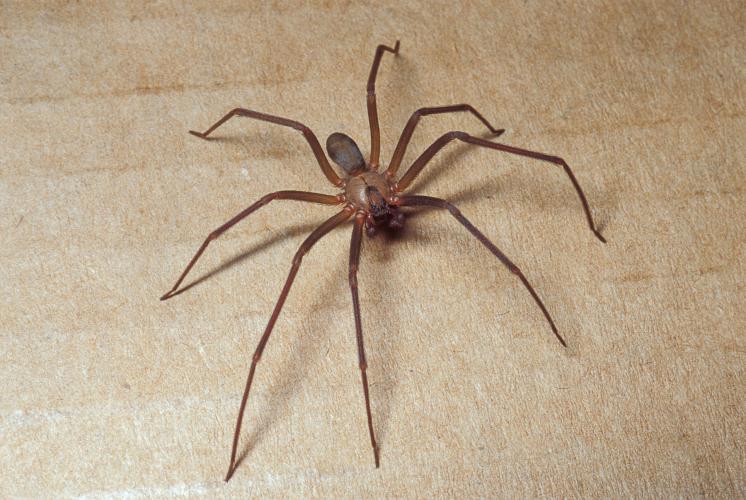Brown Recluse Spider Bite
Published (updated: ).
Introduction

In the United States, Loxosceles reclusa or brown recluse spiders are found mostly in the south, west, and midwest areas. They are usually in dark areas such as under rocks, in the bark of dead trees, attics, basements, cupboards, drawers, boxes, bedsheets, or similar locations. Dermonecrotic arachnidism is the local tissue injury that results from brown recluse spider envenomation, while loxoscelism describes the systemic syndrome caused by envenomation.
Epidemiology
Systemic involvement, while rare, is more likely to occur in children than in adults. There has recently been an increase in reports of brown recluse spider bites even in nonendemic areas. Most of these reports are likely because of other causes of similar appearing skin lesions like methicillin-resistant staph aureus skin infections.
Pathophysiology
Brown recluse spider venom is cytotoxic and hemolytic.
To further study the necrotic effects of the brown recluse spider bite, there was a study done with rabbits injected with the venom. Although a small sample size, findings showed inflammatory infiltrates, coagulative necrosis and vasculitis. With all samples, there was a zone of eosinophils referred to as “mummified” coagulative necrosis seen between the epidermal and dermal layers.
History and Physical

Brown recluse spider bites usually occur while indoors and as a defense mechanism as they are crushed or rolled over in bed. Some bites will present with only an urticarial rash. If the bite is more severe, the course usually is as follows. The initial bite will be painless, but over the subsequent two to eight hours it will become increasingly painful. Systemic symptoms of brown recluse venom can present as malaise, nausea, headache, and myalgias. In children, the systemic reaction is more severe and may also include weakness, fever, joint pain, hemolytic anemia, thrombocytopenia, organ failure, disseminated intravascular coagulation, seizures, and death.
The bite site may initially have two small puncture wounds with surrounding erythema. From there, the center of the bite will become paler as the outer edge becomes red and edematous; this relates to vasospasm which will cause the pain to become more severe. Over the next few days, a blister will form, and the center of the ulcer will turn a blue/violet color with a hard, stellate, sunken center. After this step, skin sloughing can occur, and the wound will eventually heal by secondary intention, but this can take several weeks.
Treatment / Management
Initial treatment should begin with simple first aid. Elevate the extremity above the heart or at least in a neutral position. The activity of sphingomyelinase D is temperature dependent so an ice pack to the area should help halt the necrosis process. Clean the wound with soap and water and ensure the patient’s tetanus immunization is up to date. NSAIDs can provide pain management, but some people may need opioids. Antibiotics are only necessary if there is associated cellulitis.
Management for systemic symptoms is different than for local effects; hospital admission is the recommendation for patients with hemolytic anemia, rhabdomyolysis, disseminated intravascular coagulation or end-stage organ failure. Treatment of these conditions is not different in this scenario than it would be for any other cause.
In children, systemic loxoscelism may preclude skin findings and should be considered as a differential in pediatric patients with undifferentiated acute hemolytic anemia especially in regions known to have the brown recluse spider. Hemolysis has been reported up to 7 days after spider bite so adequate follow up instructions should be given to parents of children even if there are no systemic findings during the ED visit. At a minimum, one should obtain a urinalysis at the initial visit if the working diagnosis is a brown recluse spider bite and the patient is being discharged.
What else could it be?
- MRSA skin infections
- Deep fungal infections
- Cutaneous anthrax
- Pyoderma gangrenosum
- Other insect bites
- Stevens-Johnson syndrome
- Toxic epidermal necrolysis
Prognosis
Most cases of Brown recluse Spider envenomation manifest only as local soft tissue destruction. Death is rare but has been reported especially in children.
Complications
After 4 to 6 weeks of therapy, it may be necessary to proceed with delayed skin grafting.
